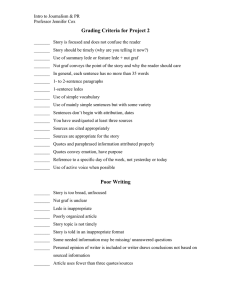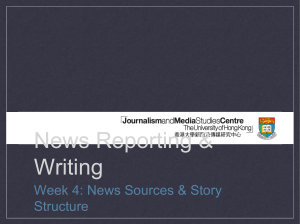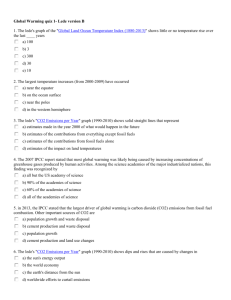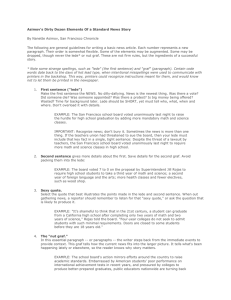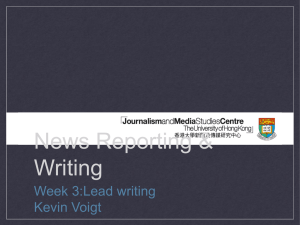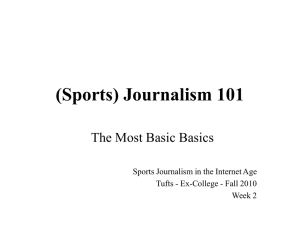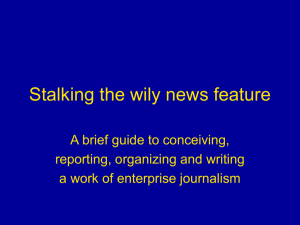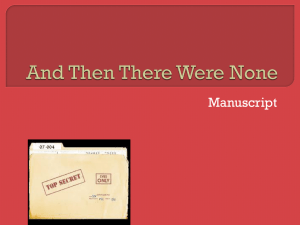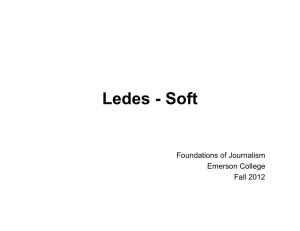Story structures - David Swartzlander
advertisement
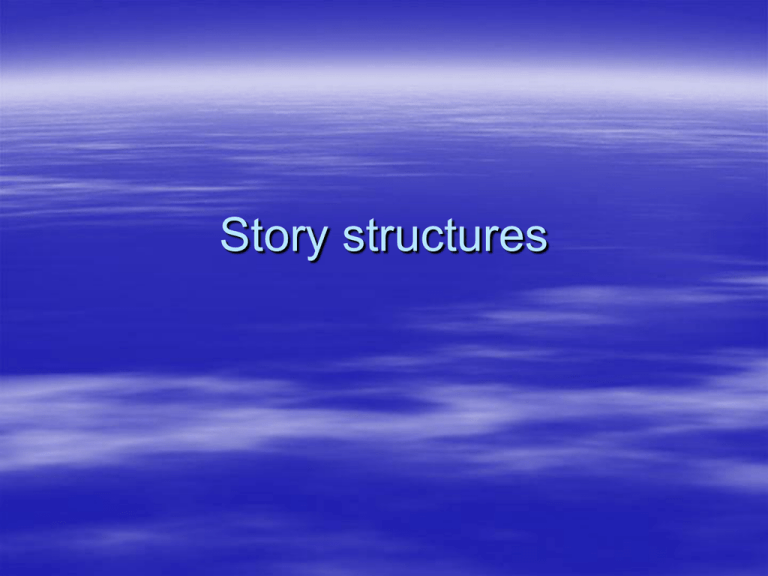
Story structures Which structure to choose? Writers need to understand story structures to choose what will best tell story. Story will dictate what form to use See story as blueprint to help determine what shape structure will take. Think of story as structural model - building - to help during the reporting and writing phases. Foundation = story idea. Quotes and anecdotes support "floors" of the story. Plan. Always gather more information than needed. Write subheads - small, 3-6 word headlines - every few grafs to help organize story. Can remove the subheads. Organize story in sequence that helps readers understand how one item leads to another. Inverted pyramid Basic story form. Begins with summary lede. Lede supported with specific information in next graf or two. Body of story includes supporting detail. Written from most important information - climax - at start of story to least important detail at end. Use news judgment as to what's important. Story structure gives reader crucial information quickly. Primary structure for breaking news. Used frequently online. 1. Summary lede – most important info - climax 2. Specific info supports lede 3. Supporting detail 4. Trivia Wall Street Journal "Dow Jonesing" Begin with specific topic Expand into broader issue Use soft lede that focuses on one person, scene or event – anecdote. Nut graph - the story in a "nut"shell – theme. Tells what the story is about and why it is important. Broadens to say why it’s important to more than one person. End with a "circle kicker." Soft lede – specific person Nut graf Why important? – story broadens Circle kicker Martini or Hourglass Start story with a hard news summary lede. Then proceed in chronological order. Works well with dramatic action, police stories When chronology begins, use overview attribution. Summary lede Backup graf supports lede Overview attribution Chronology List Summary news lede. Add paragraphs of backup information. List supporting points, using bullets. Useful with several important points to make. Limit lists to five items or less if list is high or in middle of story. Too many list items will tire reader. At end of story, list can be lengthy. Summary lede Backup graf •List key points •List key points •List key points Pyramid Chronological storytelling, How novels are written. After lede comes foreshadowing - clues about something exciting or mysterious that will happen later. Then chronological storytelling. Works best in brief stories. Suspense compels the reader to finish. Feature lede Foreshadowing Chronological storytelling Sections Divide story into sections. Book chapters. Separate sections with series of dots or large capital letter. Each section presents different view or time element. Useful for investigative, in-depth and lengthy feature stories Organize story by points of view or time. Chapter One Chapter Two Chapter Three Chapter Four Narrative Stories have characters, settings, themes, conflicts, plots and resolutions. Use suspense or compelling character to keep reader glued. Climax - a surprise or twist comes at the end. Need fascinating scenes, dramatic dialogue and details. Grab readers' attentions quickly Intrigue them. Satisfy curiosity. Grab readers’ attentions Use suspense, fascinating scenes, dialogue and details Climax
